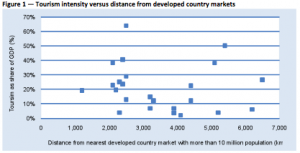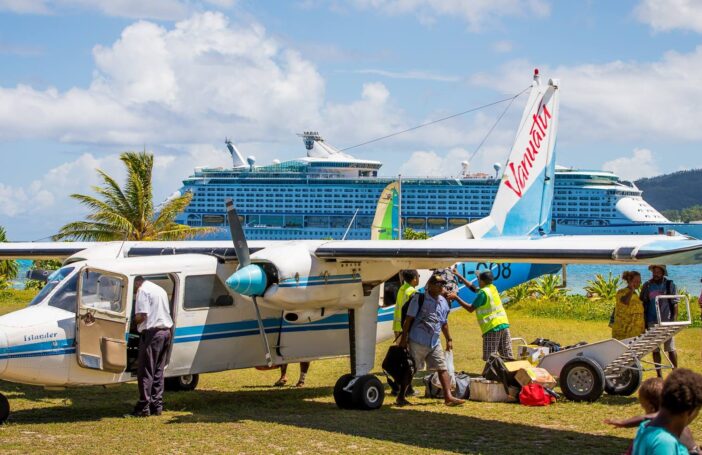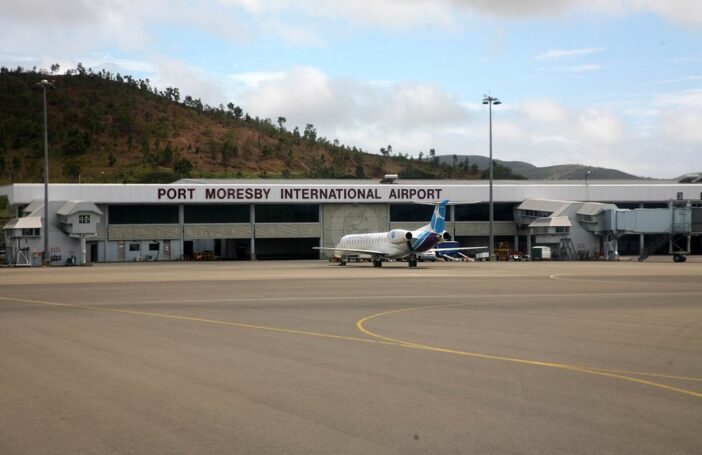Tourism has become one of the world’s leading traded sectors with receipts from tourism exports reaching US$856 billion in 2007 from 903 million tourist arrivals. Is it a panacea for small island state prosperity?
Tourism is a growing and resilient industry. Since 1980, the average annual growth rate in global tourism export receipts has been a very high 8.4 per cent. Importantly, tourism has been resilient to all manner of catastrophes – including the September 11 attacks, the SARS virus, bird flu, the surge in oil prices and the global financial crisis. Tourist arrivals in 2009 fell back to 880 million which was still 30 per cent higher than in 2000. The Asia-Pacific region recorded 181 million tourist arrivals in 2009 which was 65 per cent above that in 2000.
There exists a clear link between the economic prosperity of small island developing states and the tourism intensity of their economies. Invariably, small island developing states that have built their economy around the export of tourism services have become middle income countries, or are well on the way to becoming middle income countries.

Of the small island states with economies dominated by tourism – where tourism exports exceed 25 per cent of GDP – all but one had a GDP per capita in 2005 above US$5,000 (see table 1). The exception is the Maldives which didn’t adopt tourism as its core strategy for growth until the 1970s and has since been the fastest growing small island state on the globe (more on this later). Continued growth in recent years has resulted in GDP per capita in the Maldives rising to an estimated US$4500 in 2010.
Importantly, the data in table 1 confirms that small island developing states with tourism intensive economies also have better human development outcomes. A notable exception is Tonga which has achieved a relatively high HDI score, yet tourism exports are at just 7 per cent of GDP. Instead, Tonga’s human development outcomes are attributable to an economic base built on remittances.
That tourism intensive economies would have high HDI scores almost goes without saying as tourism does a much better job than many other industries in providing broad based opportunities that reach those in the community with low skills – both in terms of employment and micro-business opportunities. A recent World Bank and Overseas Development Institute review of the literature confirmed this, finding that between a fifth and one-third of total tourism export receipts accrue to the poor.
One could possibly draw the conclusion that it is prosperity drawing tourism rather than tourism generating the prosperity. But to draw such a conclusion would be, well, completely wrong. Almost invariably, the small island states in table 1 have no economic comparative advantage to offer that could lift them to middle income status. There are coconuts and other low value agricultural products that are in many cases given an artificial push through European industry support – sugar being the obvious example. Otherwise, there is nothing. What has made the prosperous small island economies successful is state planning built around a rich and viable export industry in which there exists comparative advantage – ie tourism.
OK, but the Pacific is different isn’t it because the countries are isolated?
 One might think that geographic isolation is a constraint for tourism development, but the evidence shows that this is not the case. Figure 1 maps out for each country the distance from the nearest major developed country market against the country’s tourism intensity. If geographic isolation was a factor then a downward sloping trend would be expected in figure 1, yet what we see is no relationship. For example, there are 3 countries – Cook Islands, Maldives and Seychelles – that are tourism intensive economies yet are further than 5000km from the nearest developed country market.
One might think that geographic isolation is a constraint for tourism development, but the evidence shows that this is not the case. Figure 1 maps out for each country the distance from the nearest major developed country market against the country’s tourism intensity. If geographic isolation was a factor then a downward sloping trend would be expected in figure 1, yet what we see is no relationship. For example, there are 3 countries – Cook Islands, Maldives and Seychelles – that are tourism intensive economies yet are further than 5000km from the nearest developed country market.
The reason a pattern does not exist between tourism and geographic isolation is that it is isolation, not geographical isolation that is key. Isolation is broken down with transport infrastructure. A country may be close to a developed country market, but if it does not have effective transport infrastructure, then it is isolated. Cook Islands, Maldives and Seychelles all have efficient and regular air services connecting them to source markets. Kiribati, Marshall Islands and Nauru are all countries less isolated geographically – but try getting there!
Comparing two countries – one that adopted tourism, one that didn’t.
 Kiribati and Maldives are island atoll microstates that are highly remote from source tourism markets. In the 1970s, both these countries were desperately poor and both countries had no tourism. GDP per person in 1980 was US$381 in Maldives and US$466 in Kiribati (figure 2). In the late 1970s, Maldives adopted a strategy of development through tourism which it has continued to implement to the present day. Kiribati didn’t and tourism is still not a prominent feature of their development plans. Three decades on and GDP per person in 2007 reached US$3040 in Maldives. In comparison, Kiribati barely moved forward with GDP per person in 2007 of just US$687 (figure 2).
Kiribati and Maldives are island atoll microstates that are highly remote from source tourism markets. In the 1970s, both these countries were desperately poor and both countries had no tourism. GDP per person in 1980 was US$381 in Maldives and US$466 in Kiribati (figure 2). In the late 1970s, Maldives adopted a strategy of development through tourism which it has continued to implement to the present day. Kiribati didn’t and tourism is still not a prominent feature of their development plans. Three decades on and GDP per person in 2007 reached US$3040 in Maldives. In comparison, Kiribati barely moved forward with GDP per person in 2007 of just US$687 (figure 2).
So what messages can we take from this?
If there is one message for policy makers in Pacific Island countries, it is that the path that maps out their future prosperity is already drawn up in countries like Maldives, Cook Islands, Antigua and Barbuda, and Seychelles. Politicians and senior bureaucrats can go to these places and establish working relationships with their counterpart officials to learn about the pathway to prosperity. Once back home, these officials can quickly plan their own tourism-led path to prosperity.
Theo Levantis is a Research Associate with the Development Policy Centre and a senior economic adviser to the Papua New Guinea government.






Great article on a development topic that I think a lot of people (including aid agencies) often ignore. If it’s done right, tourism definitely has potential to contribute to development in the Pacific (it already is), and there’s good reason why basically every Pacific government has already identified it as a priority.
Earlier this year the Marshall Islands held a tourism symposium during which the economics of tourism was discussed. We believe that it has good potential to help in our development. Tourism development has been slow, but the Marshalls now has its first major outer island resort under construction (targeting “high-end” surfers and the like — yes, there is such a thing as a high-end surfer market!).
Good on Kiribati for its innovative partnership with the Maldives! Like Kiribati, the Marshalls has a thousand empty islands — idle assets that are ideal for small scale resorts.
Global tourism demand (from investors and consumers) is growing and diversifying rapidly and little remote destinations can take advantage of this, if they position themselves right. I believe that more attention (at a regional level and from the Pacific’s key development partners) needs to be paid to tourism and its potential to serve as a lever for development and poverty reduction. It’s not a silver bullet, but it’s a bullet nonetheless.
Mauri Theo,
Thanks very much for this wonderful article.
Kiribati has just entered into a Tourism Partnership Initiative with the Maldives and a team of tourism experts have just left us after assessing our tourism potential in resort development. A group of investors will follow up in January 2011. Your report is very timely and useful in our dealings with the Maldivians.
Wishing you a Merry Christmas,
Tara